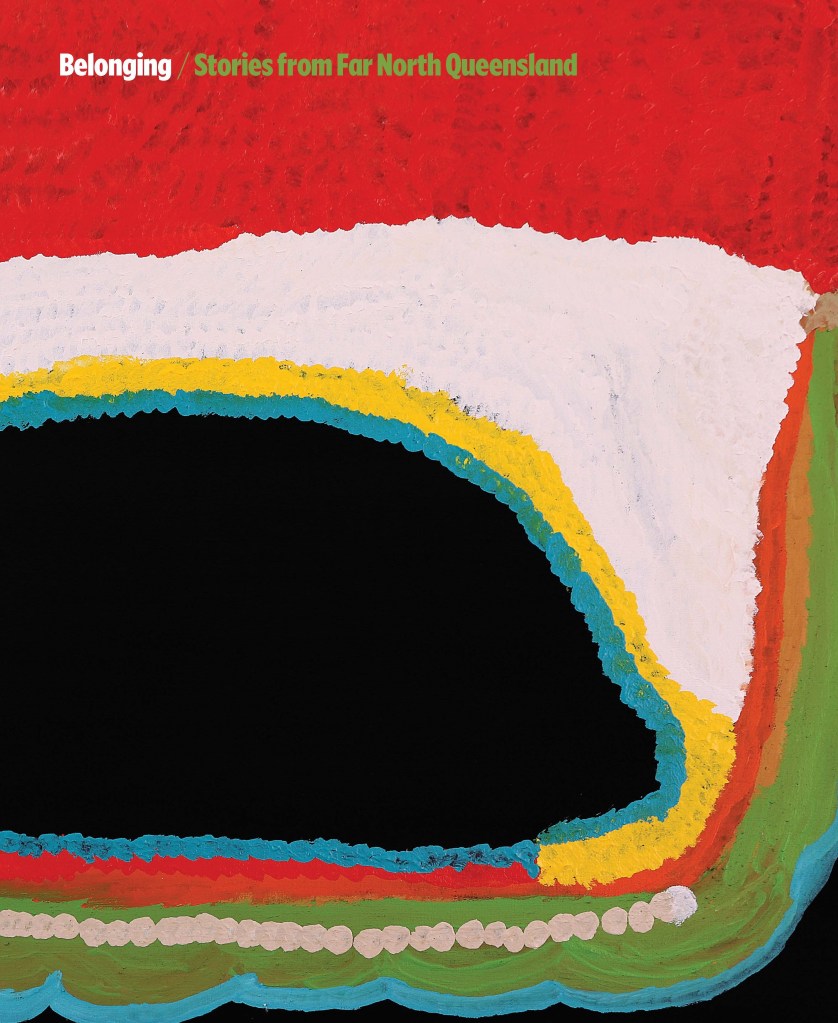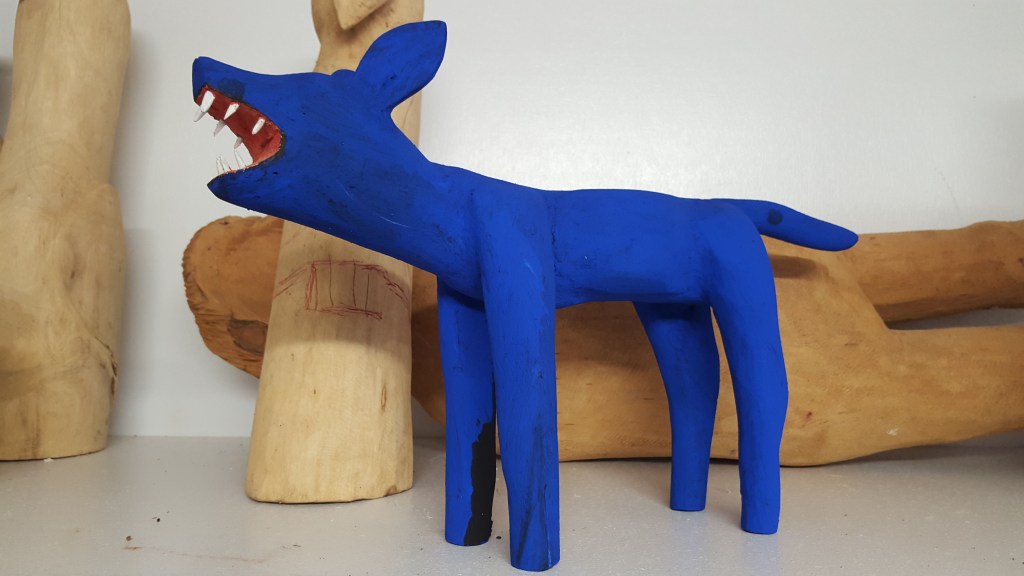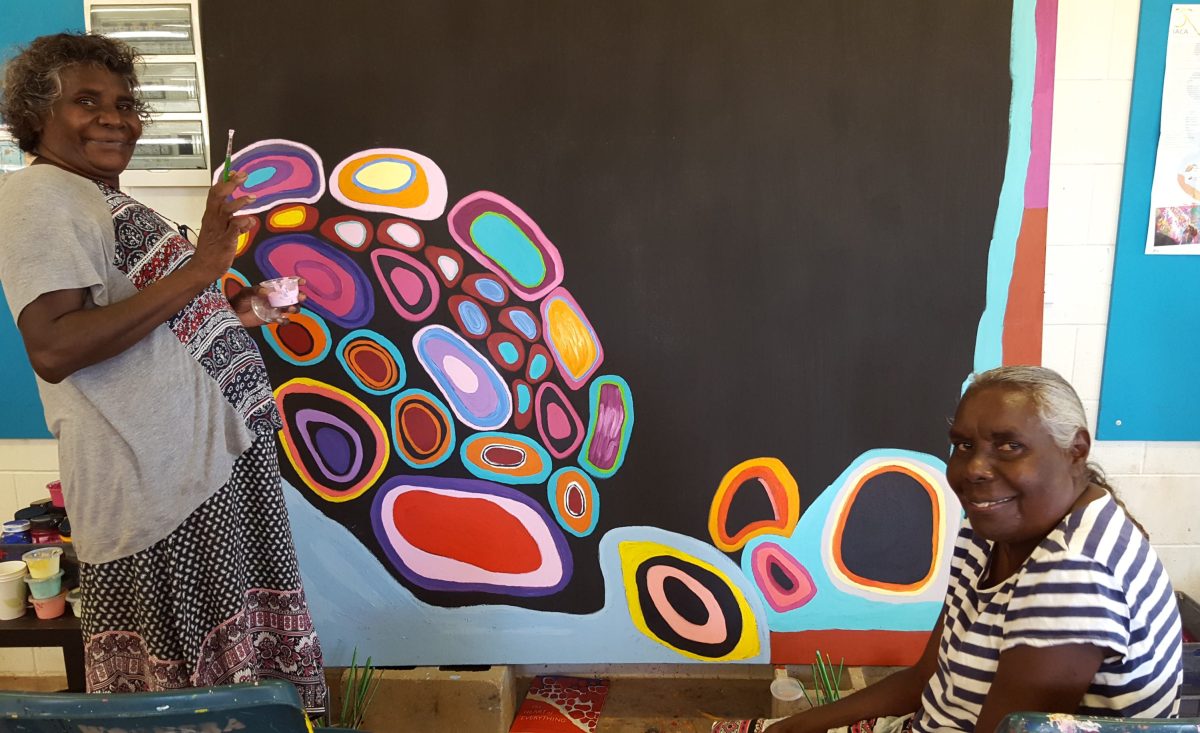For many, when they think of Indigenous art, their mind gravitates to Central Desert (or dot) painting or even to the dancers from Bangarra. But there is much greater diversity across the creative talents and cultural heritage of our Indigenous communities. One only needs to look north, to the 13 art centres of Far North Queensland, which stretch from the Torres Strait Cape York and the Wet Tropics to the Gulf of Carpentaria.
Celebrating its tenth anniversary this year, the Indigenous Art Centre Alliance (IACA) is the peak organisation that supports, trains, promotes and advocates for these remote art hubs.
Pamela Bigelow, CEO of IACA told ArtsHub: ‘Art centres in central, western and the top end of Australia have been known for so long. We are trying to even that up and have our artists seen. Our art centres had to advocate really hard to get a peak body to represent them, so this project is a major milestone.’
The Belonging/Northern Disclosure is an artist-led project that will cement the artists from the region in the national consciousness. Starting out as an exercise in professional development, it evolved into one of the most important museum acquisitions in the country.
IACA has partnered with the National Museum of Australia (NMA) to present the exhibition Belonging; Stories from Far North Queensland, featuring 415 new artworks from IACA member art centres, and produced during the multi-year arts development project coordinated by IACA.
Originally due to open in 2020, the exhibition has been rescheduled for mid-2022, when it will roll out over four consecutive shows – each running for three months – and taking an in-depth view of four art centres at a time.

Accompanying the exhibition is the publication Belonging, slated to become the seminal text on contemporary Indigenous art-making in Far North Queensland.
‘It is a really significant publication – partly funded by The Gordon Darling Foundation – that we are aiming to sell in every gallery shop in Australia. It is a really important legacy document for the organisation and most importantly, the artists as IACA celebrates its tenth year of operation,’ Bigelow said.
‘The book fills in detail from around the region, looking at the whole history of IACA, but also profiling every art centre and artist in the exhibition.’
A soft launch of the 240-page book will be held at the IACA members gathering later this month and sales of the book will be available from IACA direct from mid-November. (Email IACA to preorder the book on admin@iaca.com.au).
Bigelow makes the point that the exhibition and book enable the region’s artists to be ‘visible’ without having to leave their homes.
‘To travel around this region is very expensive. Four of the art centres are on islands. It costs more to go to Torres Strait art centres than it does to go to Paris from Cairns … Becoming known, and the region becoming known, is critical,’ she said.
WHEN A MUSEUMS SAYS WE’LL BUY IT ALL
Over 400 works have been acquired by the NMA, ensuring the diversity of this remote community will be recognised in Australia’s capital.
‘We posted sneak peeks of the works on social media and the National Museum saw it and emailed us asking whether we wanted to come down and have a chat,’ said Bigelow.
‘We showed the museum staff some of the artworks and they were blown away. They said, “would you like us to acquire this?” We were shocked; we didn’t think it would be that direct.’
‘It costs more to go to Torres Strait art centres than it does to go to Paris from Cairns. Becoming known, and the region becoming known, is critical.’
Pam Bigelow, CEO IACA
This incredible story is testament to the quality of the work created by IACA’s art centres. Comprising various media including painting, weaving, blacklight installations, ceramics, sculptures, film and photography, the artworks share what are largely, previously untold stories and perspectives on history, experiences, culture, issues and life from artists in these remote Indigenous communities.
The title of the project and exhibition, Belonging, came from the artists, who ‘wanted to show their interpretation of belonging,’ said Bigelow.

THE ETHOS OF LEGACY IN THE EVERYDAY
The Belonging/Northern Disclosure Project saw arts professionals heading out on Country and spending up to a month embedded in the art centres, focused on the transference of new skills.
Over 100 Indigenous artists have upskilled via the workshops, leaving art centres with a legacy for the future.
Bigelow explained: ‘We were aware we were behind the eightball. We were the last to get a peak body for art centres, and we had a lot of catching up to do. We needed a project that would increase the quality and outcomes for best practice, both in the materials our artists were using and in the operation of our art centres.’
The workshops covered all aspects of creating a body of work and exhibiting it, from where to source quality art materials and properly stretching canvases, to consignment lists, compiling provenance and preparing the artworks to freight.
‘It was instilling [the idea] that you have to spend money to make money – that you need quality materials, and how to order from Melbourne or Sydney,’ said Bigelow.
‘The first workshop was held in 2017, and the last workshop was being done as COVID lockdowns came in early 2020 … It really has been a three-year project,’ she added. The time and effort paid off, with the project acknowledged with a 2020 MAGNA Award.
And the artists – what was the impact for them?
‘When the artists finally get to Canberra, they’ll see the size of the institution where their work is on show – and that it is a major collection in this country – that is not just about skills but also confidence,’ said Bigelow.
The IACA art centres represented in the exhibition include: Badu Art Centre, Bana Yirriji Art & Cultural Centre, Girringun Aboriginal Art Centre, Hopevale Arts and Cultural Centre, MiArt Mornington Island Art, Moa Arts, Pormpuraaw Art & Culture Centre, Wei’num Arts and Crafts, Wik and Kugu Arts Centre, Yalanji Arts and Yarrabah Art Centre.
Learn more about the Belonging Project.
Pre-order your copy of the publication Belonging by contacting IACA at admin@iaca.com.au. The book goes on sale in November.
The Belonging project was funded by the Federal Government’s Indigenous Languages and Arts program and the Australia Council for the Arts.





